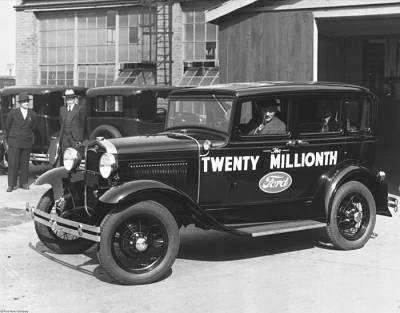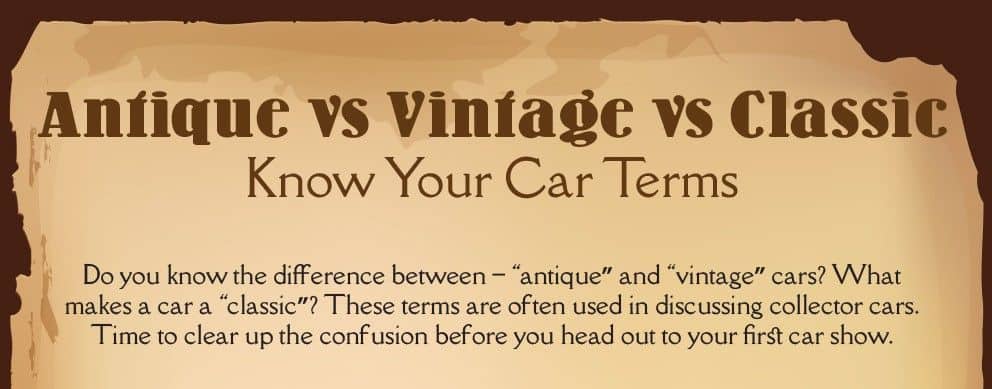 What’s the Difference?
What’s the Difference?
The terms “antique”, “vintage” and “classic” are often used to describe collector cars. However, many folks do not know the difference between them. Our infographic outlines what each word means (in the car world), in addition to some interesting historical tidbits. Share this helpful factsheet with your friends.
Clearing Terms Up
An Antique car is defined as a vehicle that is more than 25 years old, is fully restored and operational. This isn’t always the clearest definition, since the first edition Camaro is now 50 years old and no one considers it to be an antique. An easier way to explain what is Antique is to look at the different time periods that make up the Antique car era: Veteran, Brass and Vintage.
The Veteran Era – Where It All Began
The Veteran era covers the Industrial Revolution from the invention of the first horseless carriage until 1890. Automotive technology begins in 1768 when Nicolas-Joseph Cugnot builds the first steam powered carriage. The first gas powered automobile isn’t available until 1886, when Karl Benz creates the Benz Patent-Motorwagen.
Innovations Take Over in Brass Era
The Brass era (1890-1919) gets its name from the brass features (lights and radiators) on many vehicles in the Edwardian age. While the automobile still resembles horse drawn carriages, innovations are happening at a rapid pace. Key advances in ignition, suspension and braking all are developed during this time.
Henry Ford Propels Auto-Making into the Future
The Vintage era (1919-1930) is a time of transition. Automobiles are still pretty rare in 1919, affordable to only the wealthiest individuals. It isn’t until Henry Ford begins mass producing his Model T and Model A, that the car becomes accessible to working class Americans.


(www.wikipedia.org)
Everyone Can Afford a Car
The Model T, also known as the “Tin Lizzie”, is the first automobile to be mass produced on an assembly line and have completely interchangeable parts with other cars. The Model T is versatile, durable and easy to maintain. Ford’s new production techniques lower the cost of the car from $850 in 1908 to $300 in 1925. Over 16.5 million Model T cars are sold.
More Models to Choose From
The Ford Model A follows in 1927 with over 4.3 million selling by 1932. Other car makers copy Ford and change over to the factory assembly line method, giving consumers more choices than ever before. Unfortunately, many companies cannot afford to make the transition and are forced out of business.
And Only a Few Remained
The number of independent automakers dwindle from 258 in 1908 to only 44 in 1929. Changing over to mass production thins the group but the Great Depression eliminates the largest number. Only the big three – Ford, Chrysler and GM – are able to post modest sales figures during this time.
A Classic Definition
Understanding what defines an “antique” or “vintage” car helps you understand what “classic” means to a collector. A “classic” car is an older car that has enough historical significance to make it collectible. While a 50-year-old Camaro may not be an “antique”, it is definitely a “classic”.
Always Good to Respect Your Elders
The history of the automobile is filled with innovation and ingenuity. From the horseless carriage to the Model T, the antique car era displays what is truly possible if we put our minds to conquering a difficult task. This may be the reason why car lovers the world over take such pride in their antique cars. It is always good to respect your elders.
Collector and Classic Car Insurance for Less
Whether your car is “antique”, “vintage” or “classic”, it still needs the right protection. The friendly staff at Classic Auto Insurance will answer all your questions and find the perfect policy for your needs. Visit our website at www.classicins.com and see how we can help safeguard your dream car.






